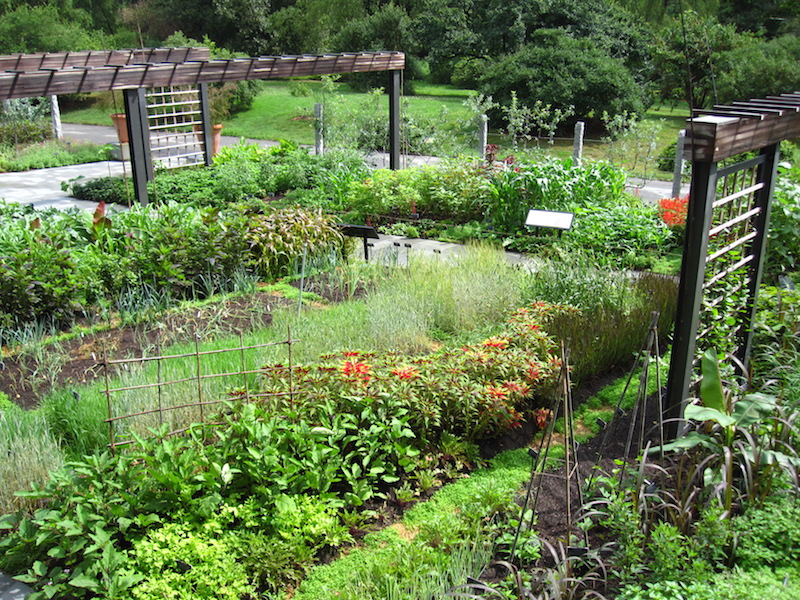To help celebrate its 100th anniversary, the Brooklyn Botanic Garden has gifted itself a brand new herb garden, but if you’re picturing a few pots of parsley, think again. The new garden is a BK version of a potager, the lovely little herb-and-vegetable gardens the French keep just outside the kitchen in order to dash out and pluck while cooking. But at over 17,000 square feet the gently sloping space is a little larger than your average backyard pot of mint.
Designed by lauded landscape architect Robert W. Hartlage, size is not the only distinction between the old and new garden patches. While the old incarnation focused on herbs familiar to pedestrian palates and suburban spice racks, its replacement is an intensely fragrant and crazily colorful love letter to Brooklyn’s multiculti culinary diversity. So, along with parsley, sage, basil and thyme (found in the Mediterranean section), garden visitors can make the acquaintance of aromatics seldom seen here but beloved by Asian, Latin-American and African cooks, as well as the rich chocolaty scent provided by spent cacao hulls donated by Mast Brothers Chocolates in Williamsburg and used as mulch.
And it’s not just herbs—watch for carrots and cardoons growing near espaliered cherry trees and heirloom apples like that belovedby-Brits chance seedling called Cox’s Orange Pippin. The Fertile Crescent and sub-Saharan Africa section showcases staples you eat every day but may have never seen alive: grains and cereals like wheat, barley, millet, while the Asian and Pacific area is planted with sugarcane, taro and shrubby sweet cassava.
We’d love to say Brooklyn’s melting pot of cooks was the new garden’s sole inspiration, but botanic gardens from Cleveland to Kansas City are putting in edible exhibits, tapping into locavore leanings and forgoing begonias for beans. (Up in the other B-borough, the New York Botanical Garden’s Edible Garden campus-wide exhibit celebrates growing and preparing great food; the chef-studded fall festival weekend October 16 and 17 should be well worth the trip.)
BBG has also added a Learning Plaza for lectures on nutrition and sustainable agriculture, as well as lessons on cooking with the newly planted pawpaws, pomegranates, quinces and Asian persimmons. But don’t get carried away with your potager reveries and try to pick a peach or pepper; when ripe, the produce will be harvested and donated to local food pantries.



